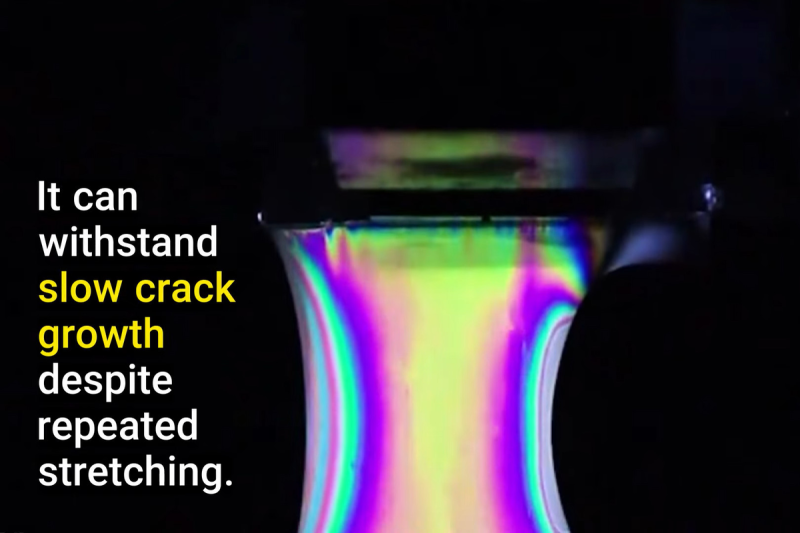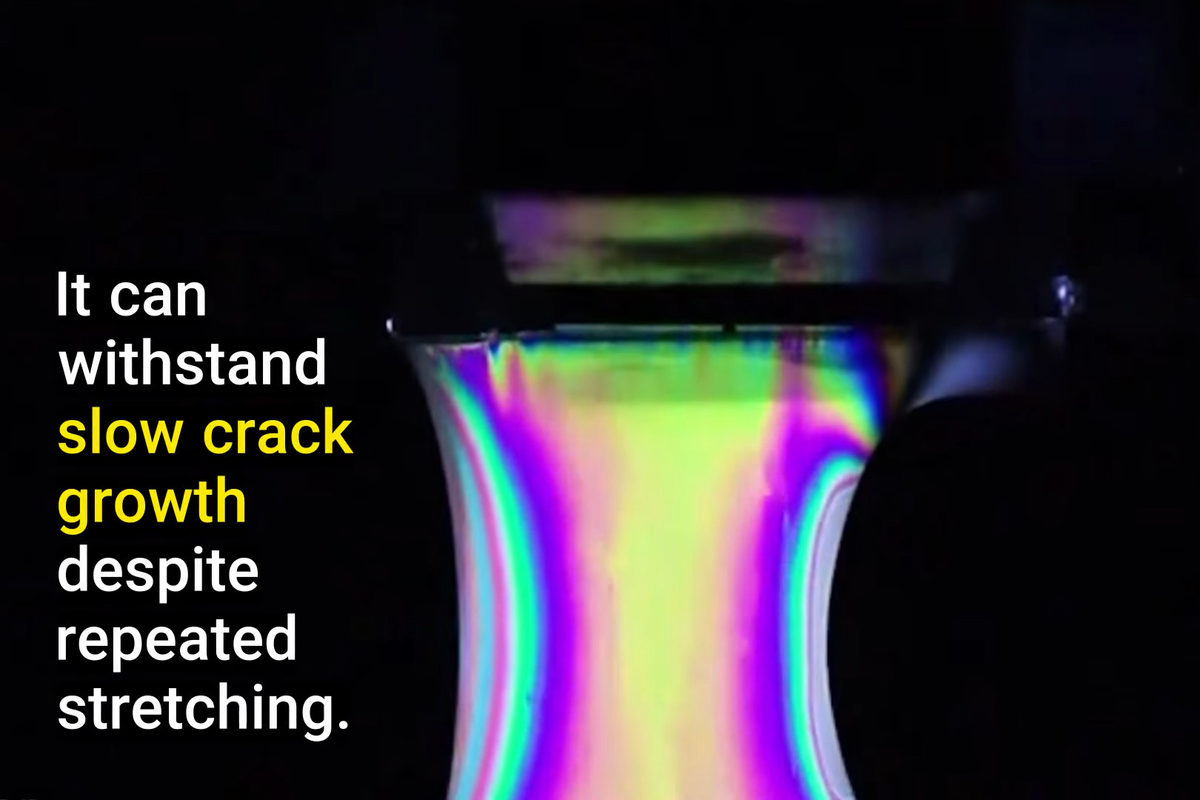
Rubber! It starts out as a goopy material harvested from special trees, and is then processed into a resilient, flexible material used for innumerable important purposes. In the vast majority of applications, rubber is prized for its elasticity, which eventually goes away with repeated stress cycles, exposure to heat, and time. When a rubber part starts to show cracks, it’s generally time to replace it.
Researchers at Harvard have now found a way to potentially increase rubber’s ability to withstand cracking. The paper, published in Nature Sustainability, outlines how the material can be treated to provide far greater durability and toughness.
Big Flex

The traditional method of producing rubber products starts with harvesting the natural rubber latex from various types of rubber tree. The trees are tapped to release their milky sap, which is then dried, processed with additives, and shaped into the desired form before heating with sulfur compounds to vulcanize the material. It’s this last step that is key to producing the finished product we know as rubber, as used in products like tires, erasers, and o-rings. The vulcanization process causes the creation of short crosslinked polymer chains in the rubber, which determine the final properties and behavior of the material.
Harvard researchers modified the traditional rubber production process to be gentler. Typical rubber production includes heavy-handed mixing and extruding steps which tend to “masticate” the polymers in the material, turning them into shorter chains. The new, gentler process better preserves the long polymer chains initially present in the raw rubber. When put through the final stages of processing, these longer chains form into a structure referred to as a “tanglemer”, where the tangles of long polymer chains actually outnumber the sparse number of crosslinks between the chains in the structure.

This tanglemer structure is much better at resisting crack formation. “At a crack tip in the tanglemer, stress deconcentrates over a long polymer strand between neighbouring crosslinks,” notes the research paper. “The entanglements function as slip links and do not impede stress deconcentration, thus decoupling modulus and fatigue threshold.” Plus, these long, tangled polymer chains are just generally better at spreading out stress in the material than the shorter crosslinked chains found in traditional vulcanized rubber. With the stress more evenly distributed, the rubber is less likely to crack or fail in any given location. The material is thus far tougher, more durable, and more flexible. These properties hold up even over repeated loading cycles.
Overall, the researchers found the material to be four times better at resisting crack growth during repeated stretch cycles. It also proved to be ten times tougher than traditional rubber. However, the new gentler processing method is fussy, and cannot outperform traditional rubber processing in all regards. After all, there’s a reason things are done the way they are in industry. Most notably, it relies on a lot of water evaporation, and it’s not currently viable for thick-wall parts like tires, for example. For thinner rubber parts, though, the mechanical advantages are all there—and this method could prove useful.
Ultimately, don’t expect to see new this ultra-rubber revolutionizing the tire market or glove manufacturing overnight. However, the research highlights an important fact—rubber can be made with significantly improved properties if the longer polymer chains can be preserved during processing, and tangled instead of excessively cross-linked. There may be more fruitful ground to explore to find other ways in which we can improve rubber by giving it a better, more resilient structure.
This articles is written by : Fady Askharoun Samy Askharoun
All Rights Reserved to Amznusa www.amznusa.com
Why Amznusa?
AMZNUSA is a dynamic website that focuses on three primary categories: Technology, e-commerce and cryptocurrency news. It provides users with the latest updates and insights into online retail trends and the rapidly evolving world of digital currencies, helping visitors stay informed about both markets.
